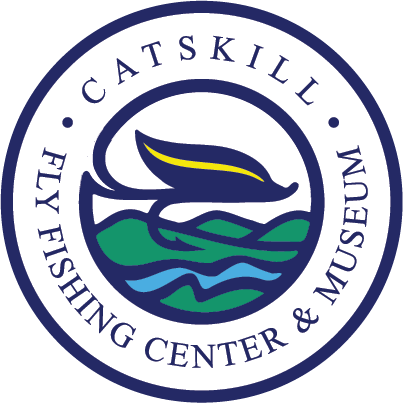Visit Our Region
The Catskills Mountains is the birthplace of American dry fly fishing. From it's pristine, protected waters to it's abundant wildlife and unique bug life, fly fishers from around the world come to fish on the famed Beaverkill, Willowemoc, Neversink, Upper Delaware and Esopus rivers, while many legendary fly fishers have made their home in the peaceful mountains just two hours north of New York City.
The Rivers
“Indeed, the water of all this Catskill region is the best in the world, a land of brooks of water, of fountains and depths that spring out of valleys and hills.”
The Beaverkill River
As late as 1873, when the first fishing club appeared on the river, access to the upper Beaverkill was still primitive; a wagon road came up from Roscoe but stopped a a Shin Creek sawmill. From there to the headwaters was still only a footpath; members of the club found it quicker to come in over the top from the next valley to the east.
Willowemoc Creek
In the 1870’s, when the railroads opened up the Catskills to visiting fishermen, Willowemoc Creek became a tender bit of accessible remoteness. It’s diverse and bubbling waters beckoned and the anglers followed. New Yorkers rose early, bundled their gear and lunch and jumped the ferry to Weehawken, New Jersey.
The Esopus Creek
The Esopus is the most hospitable of the Catskill rivers. Some who know its often muddy and turbulent waters may wonder why. Simply, the Esopus welcomes all comers. It was home to the Algonquin tribe, who chose its gentler valley over those of the Beaverkill, the Willowemoc, and the Neversink, into all of which they traveled to hunt.
The Neversink River
“For some men the Neversink was like a mistress.” Its intimate beauty and seductive charm could overwhelm the beholder with an irresistible urge to posses, whether it took the form of outright ownership or just a little overnight poaching. One such man was Clarence Roof. The two branches of this river “went private” in 1882.
The Bugs
“The trout were incessantly jumping for a species of black fly that, sheltered from the slight breeze, were dancing in swarms just above the surface of the water.”
The Fish
“The trout is dark and obscure above, but behind this foil there are wondrous tints that reward the believing eye. Those who seek him in his wild remote haunts...is never thwarted of his legitimate reward by them.”
The Brook Trout
Prior to the introduction of rainbow and brown trout, in the days before tanning was a major Catskill industry, this native NYS fish was the prominent species found in the top sections of the watershed. For the most part nowadays brook trout have been remanded to the upper reaches of the Esopus Creek and all its tributaries as they require the coldest and purest wild quality of the three species.
The Brown Trout
The Brown Trout was initially introduced into the watershed sometime after the first stocking of rainbows, and have since established themselves as wild fish also. There is an excellent population of wild browns throughout the entire watershed; in fact many of the browns caught in tributaries are wild fish with colorful dappled dark and red spots.
The Rainbow Trout
In the days of Preston Jennings through the 1950's and '60's, outdoor columnists regularly reported on spring-run rainbow trout with some in the twenty-eight to twenty-nine inch lengths. Sadly with the demise of emerald shiners in the Ashokan Reservoir, these large bows disappeared also.









